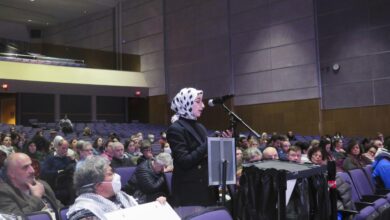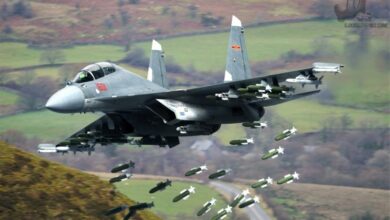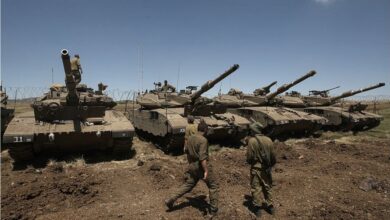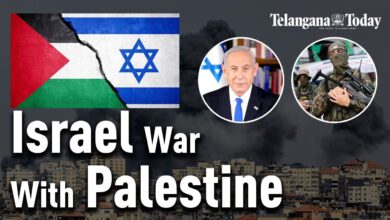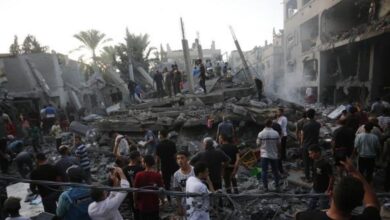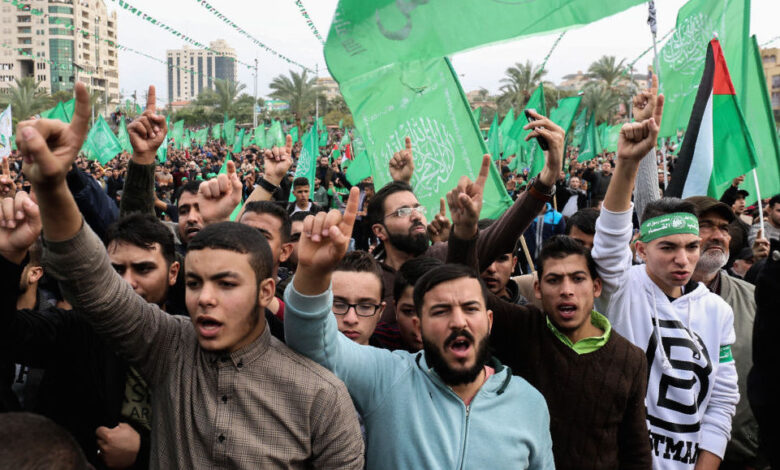
Israelis, Palestinians, Peace Activists A Complex History
Israelis palestinians peace activists – Israelis, Palestinians, peace activists – their intertwined history is a tapestry woven with threads of conflict, hope, and tireless efforts for reconciliation. This exploration delves into the historical context, contemporary issues, and the crucial role of activists in shaping the narrative of peace.
From the historical roots of the conflict to the perspectives of Israelis and Palestinians, we’ll examine the complex political landscape, the obstacles to peace, and the motivations driving peace activism. The efforts of international actors, the impact of media representation, and the enduring power of visual imagery will also be examined, providing a multifaceted view of this enduring struggle.
Historical Context: Israelis Palestinians Peace Activists
The Israeli-Palestinian conflict is a deeply rooted struggle with a complex history, shaped by competing narratives, political maneuvering, and international interventions. Understanding the historical context is crucial for comprehending the present challenges and the potential pathways toward a peaceful resolution. The conflict’s legacy continues to influence the lives of millions, impacting generations and fostering deep-seated mistrust.The conflict’s roots are entwined in the historical relationship between Jews and Arabs in the region, evolving into a political struggle over land and self-determination.
This historical backdrop includes significant events, competing claims, and evolving perspectives that have fueled the conflict’s persistence.
Key Events Impacting Israeli-Palestinian Relations
A crucial understanding of the Israeli-Palestinian conflict requires a chronological overview of pivotal events. This timeline highlights significant dates and conflicts, shaping the political landscape.
- 1917: Balfour Declaration: The British government’s declaration expressing support for a Jewish homeland in Palestine ignited tensions, as it conflicted with the existing Arab population’s aspirations.
- 1947: UN Partition Plan: The United Nations proposed a partition plan to divide Palestine into separate Arab and Jewish states, a proposal that ultimately failed to achieve its intended goal, leading to the 1948 Arab-Israeli War.
- 1948: Arab-Israeli War and Palestinian exodus: The war resulted in the displacement of hundreds of thousands of Palestinians, a significant event that continues to be a source of pain and grievance.
- 1967: Six-Day War: Israel’s victory in the Six-Day War resulted in the occupation of the West Bank, Gaza Strip, and East Jerusalem. This event solidified the division and intensified the conflict.
- 1993: Oslo Accords: A historic agreement between Israel and the Palestine Liberation Organization (PLO), aimed at establishing a Palestinian state alongside Israel. It represented a significant step toward peace but ultimately fell short of achieving its full potential.
- 2000: Second Intifada: The eruption of the Second Intifada marked a period of heightened violence and significantly undermined progress toward peace.
Historical Narratives and Perspectives
The Israeli and Palestinian narratives differ significantly, reflecting distinct historical experiences and perspectives on the land.
- Israeli narrative: Israelis often frame their history through the lens of their right to self-determination, tracing their historical connection to the land of Israel. They emphasize the historical presence of Jewish communities in the region and the need to safeguard their existence in the face of threats. The Zionist movement’s goal of establishing a Jewish state is a central element in this narrative.
- Palestinian narrative: Palestinians emphasize their historical presence and connection to the land, highlighting the displacement and loss of property following the 1948 Arab-Israeli War. They emphasize their right to self-determination and the establishment of an independent Palestinian state. The Palestinian narrative often centers on the Nakba, the catastrophe, marking the displacement and loss of their homeland.
Role of International Actors
International actors have played a significant role in shaping the conflict, with varying degrees of success in mediating the situation.
- United Nations: The UN has played a central role in mediating the conflict, with various resolutions and peacekeeping efforts. However, the UN’s effectiveness has been hampered by the competing interests of the involved parties.
- United States: The US has been a significant player in the peace process, providing substantial financial and political support to Israel. The US’s stance has influenced the trajectory of the conflict, and its policies have been a frequent point of contention.
- European Union: The EU has played a role in mediating the conflict and promoting a two-state solution. The EU’s actions have varied, reflecting the complexity of the issue.
Evolution of Peace Activism
Peace activism efforts have evolved over time, reflecting changing circumstances and shifting political landscapes.
- Early activism: Early efforts focused on advocating for a peaceful resolution, highlighting the need for coexistence and understanding. Advocates sought to promote dialogue and understanding between Israelis and Palestinians.
- Modern activism: Modern peace activism has expanded to include a broader range of activities, such as grassroots movements, advocacy campaigns, and international coalitions. Modern efforts often incorporate a wide range of strategies and perspectives.
Major Historical Agreements and Outcomes
A table summarizing key agreements and their outcomes, including failed attempts, is presented below.
Israeli-Palestinian peace activists are often deeply concerned with the socio-economic factors that fuel conflict. Understanding these factors requires looking at the broader picture, including the housing market near NYC. The struggles of many families in the area, whether they are recent immigrants or long-time residents, mirror some of the complex issues at play in the Israeli-Palestinian conflict. These parallel situations highlight the importance of addressing root causes of tension and finding peaceful resolutions for all communities.
The current state of the housing market near NYC, as reported in this recent article, housing market near nyc , demonstrates the challenges faced by people in various parts of the world. Ultimately, supporting peace initiatives for Israelis and Palestinians means acknowledging and tackling the similar struggles faced by people across diverse communities.
| Agreement | Date | Outcome |
|---|---|---|
| Balfour Declaration | 1917 | Increased tensions between Jews and Arabs, setting the stage for future conflicts. |
| UN Partition Plan | 1947 | Failed to prevent the 1948 Arab-Israeli War, leading to displacement and conflict. |
| Oslo Accords | 1993 | Promised a two-state solution but ultimately fell short of achieving its objectives. |
Contemporary Issues
The Israeli-Palestinian conflict continues to be a deeply complex and emotionally charged issue. Recent years have witnessed a fluctuating political landscape, with periods of heightened tension punctuated by brief attempts at dialogue. Understanding the current political climate, the obstacles to peace, and the perspectives of the involved parties is crucial to comprehending the ongoing struggle. This exploration will delve into the current state of affairs, highlighting the various political factions and their roles, and providing examples of current peace initiatives.
The Current Political Landscape
The Israeli-Palestinian political landscape is characterized by a stalemate. The Israeli government, while facing internal political divisions, generally maintains a security-focused approach, emphasizing the need to safeguard its borders and citizens. Palestinian political factions, including Hamas and Fatah, hold diverse views on the path forward, with differing degrees of willingness to negotiate. The absence of a unified Palestinian leadership often complicates efforts to achieve a comprehensive peace agreement.
The international community plays a limited role, offering various forms of support and mediation, yet without a significant breakthrough in the foreseeable future.
Key Obstacles to Peace
Several interconnected obstacles continue to impede progress toward a lasting peace agreement. Security concerns remain paramount for both sides, with differing interpretations of what constitutes a secure environment. The unresolved issue of Palestinian statehood and borders, including Jerusalem’s status, remains a significant sticking point. Economic disparities and the lack of opportunities for Palestinians further exacerbate the situation, fueling resentment and hindering the prospects for reconciliation.
Furthermore, the deep-seated mistrust and historical grievances between the two sides continue to fuel the conflict.
Israeli-Palestinian peace activists are often deeply affected by global economic trends, and the current housing market near NYC housing market near nyc is a prime example. High housing costs can strain resources, making it harder to support peace initiatives and contribute to the broader community. These challenges highlight the interconnectedness of seemingly disparate issues and underscore the importance of supporting these crucial activists.
Political Factions in the Region
The Israeli political landscape encompasses a spectrum of ideologies. The Likud party, generally more conservative and hawkish, often prioritizes security concerns. Centrist parties aim for a more balanced approach. On the Palestinian side, factions like Hamas and Fatah hold opposing views on the path forward. Hamas, an Islamist movement, generally rejects any agreement with Israel, while Fatah, the dominant Palestinian party, remains open to negotiations, although it faces internal divisions.
Israeli-Palestinian peace activists are working tirelessly to find common ground, despite the ongoing challenges. Tragically, the recent disappearance of a couple on a boat off the coast of Grenada, as reported by couple missing boat grenada , highlights the unpredictable nature of the world and the importance of resilience in the face of adversity. These activists, with their dedication to peaceful coexistence, represent a vital force in a world often marked by conflict.
Understanding these nuanced differences in political ideology is essential to navigating the complex political landscape.
Israeli and Palestinian Perspectives on Peace
Israeli citizens’ views on peace are diverse. Those who favor a two-state solution often seek a secure future, while others may advocate for different approaches, potentially including a single state or other forms of resolution. Palestinian citizens, similarly, hold diverse opinions regarding peace. While some support negotiations, others remain skeptical, reflecting the long-standing historical grievances and unresolved issues.
It’s important to acknowledge that there isn’t a monolithic perspective within either society.
Current Peace Initiatives
Numerous peace initiatives have been undertaken by international actors and civil society groups. These initiatives often involve dialogues, mediation efforts, and attempts to address specific concerns, such as economic development and humanitarian issues. However, sustained progress has remained elusive, highlighting the inherent complexities and deep-seated issues that continue to hinder a lasting resolution.
Comparison of Political Ideologies
| Political Ideology | Israel | Palestine |
|---|---|---|
| Zionism | Emphasis on Jewish self-determination and security within a Jewish state. | Seen as a form of colonialism and a threat to Palestinian rights. |
| Palestinian Nationalism | Often seen as a threat to Israel’s security. | Advocacy for a Palestinian state alongside Israel. |
| Islamism | Seen as a threat to Israel’s security by some. | A significant political force, with varying interpretations of Islamic law. |
| Secularism | Diverse perspectives exist. | Diverse perspectives exist. |
This table illustrates the differing political ideologies that influence the conflict, emphasizing the complexity of the issue and the need for understanding multiple perspectives.
The Role of Peace Activists
Peace activists, often operating in the complex and fraught landscapes of conflict, play a crucial role in fostering dialogue and reconciliation. Their dedication, though frequently met with resistance and setbacks, often inspires hope and change, impacting both public opinion and policy. Motivated by diverse beliefs and experiences, these individuals employ a variety of strategies to achieve their goals.Understanding the motivations, methods, challenges, and impact of peace activists provides valuable insight into the potential for positive change in conflict zones.
Their efforts are not simply acts of altruism; they are active strategies to address deep-rooted societal issues and promote peaceful resolutions.
Motivations of Peace Activists
Peace activists are driven by a range of factors, including personal experiences, ethical convictions, and a desire for a more just and peaceful world. Some are motivated by witnessing the suffering caused by conflict, while others are inspired by a belief in the inherent dignity and worth of every individual. Many are committed to nonviolent approaches to resolving conflict, recognizing the destructive power of violence.
This conviction often stems from religious or philosophical beliefs.
Methods Employed by Peace Activists
Peace activists employ a diverse array of methods to promote dialogue and reconciliation. These methods often involve direct engagement with opposing sides, organizing peaceful protests, and fostering community building initiatives. Advocacy through writing, public speaking, and grassroots organizing are crucial components of their efforts. Furthermore, building bridges through educational programs and cultural exchange initiatives is common. Some activists focus on creating platforms for dialogue between different groups, while others concentrate on raising awareness about the issues that fuel conflict.
Challenges and Obstacles Faced by Peace Activists
Peace activists face significant challenges, including political opposition, social stigma, and personal threats. They often operate in highly charged environments where violence and hostility are commonplace. Securing funding and maintaining long-term support for their efforts can be difficult. Furthermore, skepticism and distrust from the communities they seek to serve can be a significant hurdle. Disagreements within activist groups themselves, often stemming from differing perspectives and strategies, can also pose a significant challenge.
Israelis, Palestinians, and peace activists are working tirelessly to find common ground, but sometimes the path to understanding can feel as winding as a hockey player’s career. For example, it’s fascinating how even seemingly unrelated topics like whether Phil Kessel fits the Vancouver Canucks’ style can spark conversations about complex issues like finding harmony and mutual respect between different groups.
It’s all about the different ways we can connect, and ultimately, Israelis, Palestinians, and peace activists are still striving for lasting peace.
Impact of Peace Activism on Public Opinion and Policy
Peace activism can significantly impact public opinion by raising awareness about the human cost of conflict and promoting peaceful solutions. Their actions can challenge prevailing narratives and encourage dialogue, which in turn can lead to shifts in public opinion. Successful activism can also influence policy decisions, pressuring governments and international organizations to adopt more peaceful approaches. For instance, the anti-apartheid movement significantly influenced public opinion and ultimately led to the dismantling of the apartheid system in South Africa.
Types of Organizations Involved in Peace Activism
A wide array of organizations engage in peace activism. These include grassroots community groups, international NGOs, religious organizations, and academic institutions. Each organization brings unique perspectives and resources to the table. Some focus on local initiatives, while others work on a global scale.
Diverse Backgrounds and Perspectives of Peace Activists
| Category | Background/Perspective | Example |
|---|---|---|
| Religious Leaders | Emphasize the sanctity of life and the need for peaceful coexistence | Pastoral outreach in conflict zones |
| Academics/Researchers | Focus on analyzing conflict dynamics and promoting peace education | Developing peace curricula in schools |
| Human Rights Advocates | Advocate for the rights of victims of conflict and promote accountability | Documenting human rights abuses and lobbying for justice |
| Community Activists | Work directly with communities affected by conflict to build trust and foster dialogue | Organizing community reconciliation programs |
| International Organizations | Promote international cooperation and peacebuilding initiatives | UN peacekeeping operations |
Israeli and Palestinian Perspectives

The Israeli-Palestinian conflict is a deeply complex and multifaceted struggle, with each side holding firm to their historical narratives and aspirations for the future. Understanding these divergent perspectives is crucial for comprehending the enduring nature of the conflict and the obstacles to achieving lasting peace. This exploration delves into the core beliefs, hopes, and concerns driving the Israeli and Palestinian positions on peace, the two-state solution, and a shared future.The conflict’s historical roots, coupled with contemporary political realities, have shaped the contrasting views of Israelis and Palestinians on crucial issues like land, security, and self-determination.
Examining these perspectives allows us to gain a more nuanced understanding of the challenges and potential pathways towards a resolution.
Israeli Perspective on Peace
Israelis generally view peace as a security-based agreement that ensures the safety and well-being of its citizens. They prioritize the protection of their borders and the prevention of future attacks, often citing past conflicts and terrorist threats. Security concerns are deeply intertwined with the narrative of a Jewish homeland, and the desire to safeguard the existence of Israel as a Jewish state.
This perspective emphasizes the need for a secure and recognized border and often necessitates the establishment of defensive measures and strategies.
Palestinian Perspective on Peace
Palestinians envision peace as an end to the occupation, enabling the establishment of an independent and sovereign state, with self-determination and full rights over their land and resources. This encompasses the restoration of their homeland, an end to displacement and oppression, and the realization of their historical and national aspirations. They hope for a future where their people can live in dignity and freedom, and enjoy the same rights as other nations.
Root Causes of the Conflict: Israeli and Palestinian Views
The Israeli and Palestinian perspectives on the root causes of the conflict differ significantly. Israelis often emphasize the security threats posed by Palestinian militant groups and the historical claims to the land, tracing back to biblical and ancient historical texts. Palestinians, conversely, highlight the ongoing occupation and the denial of their right to self-determination, and the historical displacement and dispossession of their people.
These contrasting narratives underscore the fundamental disagreements at the heart of the conflict.
Thinking about Israeli-Palestinian peace activists lately, and how important their work is. It’s inspiring to see people dedicated to finding common ground. Listening to some chill tunes lately has really helped me de-stress and refocus. Check out this amazing playlist featuring SZA, Norah Jones, and AG Cook – it’s the perfect soundtrack for contemplation, and a great reminder that even in times of tension, music can unite us all.
playlist sza norah jones ag cook It really puts things into perspective. Back to the activists, though – their dedication to peace is truly remarkable.
Views on a Two-State Solution
Israelis generally support a two-state solution, but their vision is often constrained by security concerns, particularly regarding the borders and the security of the future state. They advocate for a solution that ensures the security of Israel and a viable and secure Palestinian state. Palestinians also support a two-state solution, but their vision is intertwined with the right of return for Palestinian refugees, and a resolution that addresses the historical injustices and the need for an independent and sovereign state.
Different Visions of a Shared Future
The Israeli and Palestinian visions of a shared future are starkly different. Israelis envision a future where Israel remains a secure Jewish state, coexisting with a neighboring Palestinian state. Palestinians envision a future where their Palestinian state is recognized and independent, allowing for self-determination, equality, and a peaceful coexistence. These contrasting visions highlight the profound disagreements over the basic terms and conditions of a potential resolution.
Key Demands and Concerns of Both Sides
| Aspect | Israeli Demands/Concerns | Palestinian Demands/Concerns |
|---|---|---|
| Security | Guarantees of security for Israelis and their state, including border security and prevention of future attacks. | End to the occupation and the creation of a secure and sovereign Palestinian state. |
| Land | Recognition of Israel’s right to exist within secure borders, and the preservation of settlements. | Right of return for Palestinian refugees, and the restoration of their historical lands. |
| Self-determination | The right of Israel to determine its own future and identity, and the safety of its people. | The right of the Palestinian people to self-determination and the establishment of a sovereign Palestinian state. |
| Two-state solution | A secure and viable two-state solution that recognizes Israel’s existence and security needs. | A two-state solution that recognizes the rights of Palestinian refugees and the establishment of a sovereign and independent Palestinian state. |
International Involvement
The Israeli-Palestinian conflict has consistently drawn the attention and involvement of numerous international bodies and organizations. Their attempts to mediate peace and foster a resolution have often been multifaceted, encompassing diplomatic initiatives, legal frameworks, and humanitarian aid. Understanding the various international actors and their roles is crucial to comprehending the complexities of this enduring conflict.International organizations, such as the United Nations, have played a pivotal role in mediating peace efforts.
Their involvement has extended to providing platforms for dialogue, monitoring ceasefires, and deploying peacekeeping forces. However, the effectiveness of these interventions has been subject to varying degrees of success, often hindered by political sensitivities and differing perspectives of the parties involved.
United Nations Involvement, Israelis palestinians peace activists
The United Nations has been actively engaged in the Israeli-Palestinian conflict since its inception. The UN’s involvement encompasses a broad range of activities, including peacekeeping missions, humanitarian aid, and the establishment of various committees and resolutions aimed at fostering a peaceful resolution. The UN has also played a critical role in documenting human rights abuses and advocating for international legal frameworks to be applied to the situation.
Role of International Law
International law plays a crucial role in the conflict, with various international conventions and treaties influencing the actions and responsibilities of the parties involved. International humanitarian law, for instance, seeks to protect civilians and limit the impact of armed conflict. International human rights law emphasizes the fundamental rights of individuals regardless of their nationality or affiliation. The application and interpretation of these legal frameworks, however, are often contentious, as different parties may have differing interpretations of their implications.
Effectiveness of International Interventions
The effectiveness of international interventions in the Israeli-Palestinian conflict is a complex issue, often judged based on the criteria of lasting peace and a just resolution. While some interventions have facilitated short-term ceasefires or humanitarian aid delivery, achieving a sustained and comprehensive peace agreement has proven challenging. Factors contributing to the limited success include the deep-seated political divisions, lack of trust between the parties, and external pressures influencing the regional dynamics.
Examples of International Aid and Development Efforts
International aid and development efforts have aimed to address the humanitarian needs of both Israelis and Palestinians. These efforts have included providing assistance with infrastructure, education, healthcare, and economic development. However, the distribution and effectiveness of such aid have often been complicated by political considerations and security concerns. Specific projects, such as those focused on rebuilding infrastructure damaged by conflict, have been hampered by logistical difficulties or differing priorities.
Perspectives of International Actors
The perspectives of international actors on the Israeli-Palestinian conflict are diverse and often influenced by their own geopolitical interests and historical contexts. Some actors prioritize the protection of human rights, while others emphasize the security concerns of their respective nations. These divergent viewpoints can create challenges in achieving consensus and a unified approach to the conflict. Furthermore, different actors may have distinct interpretations of the historical context, influencing their perspectives on the conflict.
Summary of International Resolutions
| Resolution Number | Year | Key Provisions |
|---|---|---|
| UN Resolution 242 | 1967 | Calls for withdrawal of Israeli forces from occupied territories and recognition of the sovereignty, territorial integrity, and political independence of every state in the area. |
| UN Resolution 338 | 1973 | Calls for an immediate ceasefire and the establishment of a framework for negotiations to achieve a just and lasting peace. |
| UN Resolution 1397 | 2002 | Endorses the Road Map for Peace, outlining a two-state solution based on pre-1967 borders. |
The table above provides a concise overview of some key UN resolutions. Each resolution reflects a specific perspective and approach to the conflict, often addressing aspects of territorial claims, security concerns, and the establishment of a two-state solution.
The Impact of Media Representation

The media plays a powerful role in shaping public perception of the Israeli-Palestinian conflict. Its portrayal of events, individuals, and groups significantly influences how people understand the historical context, contemporary issues, and potential solutions. This influence extends to the emotional responses and ultimately the actions taken towards the conflict.Media narratives can either foster empathy and understanding or contribute to prejudice and hostility.
The language used, the images chosen, and the stories highlighted all contribute to the overall impression conveyed to the audience. Understanding how media portrays the conflict is crucial to analyzing its impact on public opinion and the search for peace.
Media Portrayals of the Conflict
Media outlets often present the Israeli-Palestinian conflict through a lens that emphasizes the conflict’s volatile nature. This approach can inadvertently reinforce the narrative of an intractable struggle, making it challenging for the public to grasp the complexities and nuances of the situation. The selection of which events are highlighted, how they are framed, and the voices included all influence the narrative.
Role of Media in Shaping Public Opinion
Media representations heavily influence public opinion on the conflict. For instance, if a particular media outlet consistently portrays Palestinians as aggressors, it may lead to a negative perception of them in the eyes of the public. Conversely, a focus on the suffering of civilians in both communities can generate empathy and support for peace efforts. News coverage plays a vital role in determining how the public perceives the conflict.
Media Representation of Israelis, Palestinians, and Peace Activists
Different media outlets often portray Israelis, Palestinians, and peace activists in ways that reflect their own biases and agendas. These portrayals can range from simplistic caricatures to more nuanced depictions.
Comparison of Coverage Across Different News Outlets
A significant difference exists in the coverage of various news outlets. Some outlets might focus on the political maneuvering of leaders, while others highlight the human cost of the conflict. Some might emphasize Israeli security concerns, while others focus on Palestinian grievances. Examining these differences provides insight into how varying narratives shape public perception.
Impact of Social Media on the Conflict
Social media platforms have become powerful tools in disseminating information and fostering engagement in the conflict. However, the rapid spread of information on social media can also lead to the rapid dissemination of misinformation and the spread of hate speech. The ability to share information instantly, and often without fact-checking, creates a new set of challenges and opportunities for shaping public opinion.
Table Contrasting Media Portrayals
| Media Outlet | Portrayal of Israelis | Portrayal of Palestinians | Portrayal of Peace Activists |
|---|---|---|---|
| Example Outlet 1 | Strong emphasis on security concerns; often portrayed as victims. | Portrayed as perpetrators of violence; their grievances downplayed. | Often portrayed as idealistic but ineffective. |
| Example Outlet 2 | Portrayed as occupying force; criticized for actions. | Portrayed as victims of oppression; their struggles highlighted. | Often seen as crucial in facilitating dialogue. |
| Example Outlet 3 | Neutral, presenting both sides of the story. | Neutral, presenting both sides of the story. | Portrayed as critical mediators. |
Note: This table provides a simplified illustration. Real-world portrayals are far more complex and nuanced.
Visual Representation of the Conflict
The Israeli-Palestinian conflict is deeply rooted in history, and its visual representation has played a significant role in shaping public perception. Images, whether photographs, paintings, or film, have the power to evoke strong emotions and often become powerful symbols, influencing how individuals and societies understand the events and actors involved. These images are not neutral representations; they are imbued with meaning, often reflecting the perspectives and biases of those who created them.Visual narratives, both intentional and unintentional, contribute significantly to the narrative of the conflict.
They can highlight suffering, demonstrate resilience, or portray acts of violence. Understanding the visual language of this conflict is crucial to comprehending its multifaceted nature and the differing interpretations surrounding it.
Iconic Images of the Conflict
A multitude of iconic images have emerged from the conflict, each carrying its own weight of historical and cultural significance. These images range from intimate portraits of everyday life to dramatic depictions of violence and struggle. Their enduring impact on the public consciousness stems from their ability to connect with viewers on a visceral level, often triggering powerful emotional responses.
Historical and Cultural Significance of Iconic Images
Many images have gained iconic status due to their ability to encapsulate a specific moment in the conflict or a broader theme. For instance, images of refugees fleeing conflict zones, often depicting the vulnerability and displacement, hold strong cultural and historical significance. They serve as reminders of the human cost of the conflict and underscore the enduring consequences of displacement and suffering.
Similarly, images of Israeli soldiers and Palestinian civilians interacting or protesting have varying meanings and are often laden with symbolic weight, demonstrating a variety of emotions and experiences. These visuals provide a glimpse into the human stories behind the conflict, though often through a specific lens.
Role of Symbolism in Shaping Perceptions
The symbolism embedded within these images is crucial in shaping public perceptions of the conflict. A specific image of a child injured in a protest, for example, can evoke feelings of sympathy, outrage, and a call for action. Similarly, images of Israeli soldiers standing guard, though often not directly depicting violence, can symbolize occupation and power dynamics. The careful selection and framing of these images often communicate specific narratives about the conflict, and in turn, shape public opinion and attitudes.
Emotional Impact of Images on Individuals
The visual representation of the conflict can have a profound emotional impact on individuals. Images of violence and suffering can evoke feelings of horror, sadness, and empathy. Images of resilience, defiance, and determination, on the other hand, can inspire hope and solidarity. The impact of these images varies significantly depending on individual experiences, cultural backgrounds, and existing biases.
Examples of Artistic Representations
Artistic representations of the conflict offer alternative perspectives and interpretations. Paintings, sculptures, and other forms of art can provide deeper insights into the human experience during the conflict. They often explore the emotional complexities and psychological impacts on individuals, communities, and cultures. A painter might focus on the human cost, using symbolic imagery to capture the sense of loss and struggle, or highlight the resilience of those who have endured hardship.
Films and documentaries, often portraying stories of ordinary people, can provide a deeper understanding of the conflict’s impact on individuals.
Visual Imagery Representing Different Groups
| Group | Typical Visual Representation | Symbolic Meaning |
|---|---|---|
| Israelis | Soldiers in uniform, often in defensive postures; portraits of families and daily life; images of technological advancements. | Security, nation-building, community life; but also, depending on context, occupation, and potential conflict. |
| Palestinians | Refugees, protesters, victims of violence; images of daily life in refugee camps and occupied territories; portraits of community leaders. | Suffering, displacement, resilience; but also, depending on context, resistance, and potential conflict. |
| Peace Activists | Demonstrators holding signs; individuals engaging in dialogue; images of peace negotiations; and images promoting coexistence. | Advocacy for peace, dialogue, and cooperation; efforts towards conflict resolution. |
Future Prospects
The Israeli-Palestinian conflict, a deeply entrenched and complex issue, demands a nuanced understanding of potential future scenarios. While a lasting peace remains elusive, exploring potential pathways forward, however challenging, is crucial for fostering a more hopeful future for both Israelis and Palestinians. The ongoing struggle underscores the urgent need for innovative solutions and a commitment from all stakeholders to de-escalate tensions and build bridges.The future trajectory of the conflict is intricately linked to the choices made by individuals, groups, and nations.
The actions of peace activists, political leaders, and ordinary citizens all contribute to the possibility of a more peaceful resolution, or alternatively, to perpetuating the cycle of violence and division. Understanding the potential pitfalls and opportunities is critical for shaping a future where both peoples can live in safety and dignity.
Potential Scenarios
The conflict’s future may unfold in various ways, ranging from a gradual improvement in relations to a further escalation of violence. Some scenarios include continued stalemate, a potential two-state solution, or even a more complex arrangement. The key is that each scenario has implications that must be considered carefully and holistically.
Potential Solutions
Various solutions have been proposed, including the establishment of a two-state solution, a confederation, or a binational state. The feasibility and viability of each solution depend on the willingness of both sides to compromise and negotiate in good faith. Negotiations involving concessions, mutual recognition, and the implementation of a fair agreement are crucial to achieving any resolution. The ultimate success of any solution hinges on the active participation of both Israelis and Palestinians.
Role of Individual Actors
Individual actors play a significant role in shaping the future of the conflict. Peace activists, religious leaders, and ordinary citizens can all contribute to fostering understanding, empathy, and dialogue between the two sides. Their efforts, even in small ways, can have a significant impact on the broader dynamics of the conflict. By promoting reconciliation and challenging extremist narratives, individuals can contribute to a more peaceful and just future.
Long-Term Impact
The long-term impact of the conflict extends far beyond the immediate region. The unresolved conflict can have profound implications for regional stability, international relations, and the broader global landscape. Continued tension and violence can lead to further instability, radicalization, and humanitarian crises. Finding a lasting solution is vital not only for the Israelis and Palestinians but for the entire world.
Opportunities for Reconciliation
Despite the deep-seated divisions, opportunities for reconciliation exist. These include fostering inter-community dialogue, promoting educational exchanges, and building shared narratives that emphasize commonalities rather than differences. Creating joint ventures in areas like trade and technology can promote cooperation and reduce conflict.
Potential Agreements and Implications
| Potential Agreement | Implications |
|---|---|
| Two-State Solution | Creation of two independent states, with borders agreed upon through negotiation, and a mutually agreed-upon resolution of the status of Jerusalem. |
| Confederation | Establishment of a shared governing structure, with separate identities and jurisdictions. |
| Binational State | Joint governance and citizenship for both Israelis and Palestinians, potentially with specific protections and representation for each community. |
| Mutual Recognition | Acknowledging the legitimacy of both states and their rights to exist. |
Ending Remarks
In conclusion, the Israeli-Palestinian conflict presents a multifaceted challenge, demanding a deep understanding of historical context, contemporary issues, and the crucial role of peace activists. The varied perspectives, motivations, and obstacles faced by Israelis, Palestinians, and international actors highlight the complexity of achieving lasting peace. While significant challenges remain, the ongoing commitment of peace activists offers a glimmer of hope for a future where reconciliation is possible.
Essential FAQs
What are some common misconceptions about peace activists?
Some misconceptions portray peace activists as naive or as having a one-sided view. In reality, peace activists come from diverse backgrounds and often hold nuanced perspectives on the conflict, striving for solutions that address the concerns of both Israelis and Palestinians.
What are some examples of current peace initiatives?
Numerous organizations and individuals are involved in peace initiatives, including dialogue forums, community projects, and educational programs. Examples include initiatives focused on building trust between Israelis and Palestinians through shared cultural experiences.
What role do international organizations play in mediating the conflict?
International organizations, like the UN, play a crucial role in mediating the conflict through diplomatic efforts, peacekeeping missions, and humanitarian aid. However, their effectiveness is often debated.
How does social media impact the conflict?
Social media can be a powerful tool for both disseminating information and fostering polarization. It’s used by various actors to promote their perspectives and narratives, which can influence public opinion and potentially escalate tensions.

